1-) UV TYPES
1a-) HALS UV
It protects the polymer structure of the greenhouse cover against low-wavelength sunlight from the sun.
The service life of the greenhouse cover varies depending on the thickness of the greenhouse cover and the quality and usage rate of the UV used.
Although the HALS UVs used are not resistant to the chemicals used in the greenhouse, other UV types with high resistance can also be used in production.
1b-) THT UV TRIAZINE HALS TECHNOLOGY (ANTIVIRUS + CHEMICAL RESISTANCE + UV)
The THT UV used protects the greenhouse cover from the harmful effects of these rays by preventing the oxidation of the polymer chain of polyethylene against low-wavelength sunlight and prolongs its lifetime.
UV additive stabilizes photosynthesis by providing a perfect balance of light distribution, which ensures stable plant growth as well as protects plastic against the negative effects of the sun.
With its Anti Virus (A.V) feature, it prevents the whitefly from spreading virus disease. In addition, it does not adversely affect the activity of the bee.
At the same time, THT-UV, a high-tech product, has chemical resistance that cannot be compared with classical Hals UVs.
The service life of the greenhouse cover varies depending on the thickness of the greenhouse cover and the quality and usage rate of the UV used.
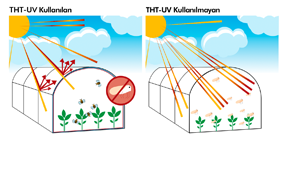
1c-) NIQ UV
Classical UV-produced greenhouse covers; Sulfur, sulfur-added pesticides are not resistant to sulfur-based acids. Therefore, when exposed to sulfur and sulfur-based chemicals, the greenhouse cover becomes unusable before its period. Green greenhouse covers produced with NIQ UV, also known as Anti-Chemical, are extremely resistant to the use of sulfur.
Green greenhouse covers produced with NIQ UV should be used in plant productions such as rose and cucumber cultivation, where the use of sulfur is common.
It should be known that green imitation greenhouse covers colored with paint do not have the same properties.
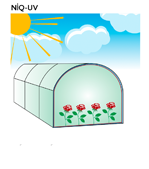
2-) IR (Infrared Ray Barrier)
2a-) Thermal Feature
It reduces the escape of heat to the outside through radiation from inside the greenhouse.
Due to its feature, the ambient and soil temperature in the greenhouse is 2 to 4° C higher on the days when the air is open under equivalent conditions compared to the covers that do not use IR.
It reduces the temperature difference between day and night by allowing the greenhouse to cool more slowly at night.
It reduces the risk of frost and increases yield and quality.
In addition, it provides significant savings in the heating cost of the greenhouse.
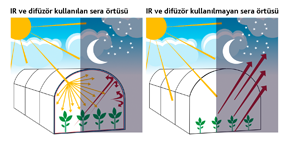
2b-) Diffusion Feature
3-) EVA (Ethylene Vinyl Acrylate) / EBA (Ethylene Butyl Acrylate)
Due to the contribution of EVA / EBA, the mechanical properties of the greenhouse cover such as elasticity, tear resistance and impact resistance have been increased.
With the use of this additive, the greenhouse cover is perfectly adapted to different weather conditions (such as strong winds, hail).
EVA / EBA additive also increases the thermal property and light transmittance of the greenhouse cover.
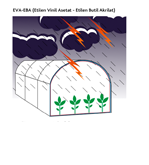
4-) ANTI FOG
Thus, the greenhouse cover prevents sunburn and fungal diseases caused by water droplets falling on the plant due to the lens feature caused by the water droplets formed on the inner surface.
Due to its benefits, drug savings, yield and quality increase are provided.
AMNESTY. useful life of the contribution; It is around 12-18 months depending on the climatic conditions and the use of greenhouse cover.
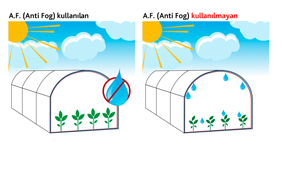
5-) ANTI MIST
It reduces the fogging that occurs during sunrise in greenhouse covers using A.F.
The useful life of A.Mist additive is around 3-8 months, depending on the conditions of use of the greenhouse cover, the structure of the greenhouse and its ventilation.
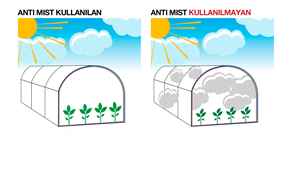
6-) ANTI DUST
It prevents dust from adhering to the greenhouse cover.
Eliminates the risk of reduced sunlight due to dust.
It eliminates the loss of efficiency due to lack of light.
It ensures that the greenhouse always receives better and more efficient light.
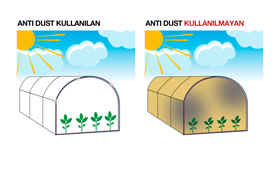



Social